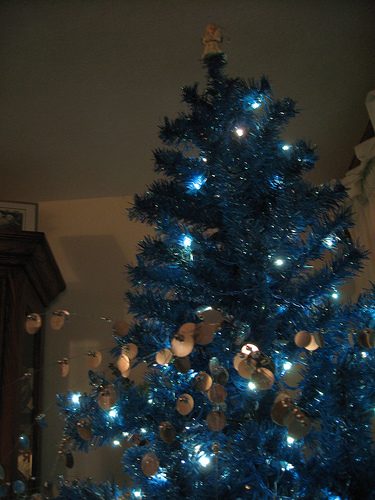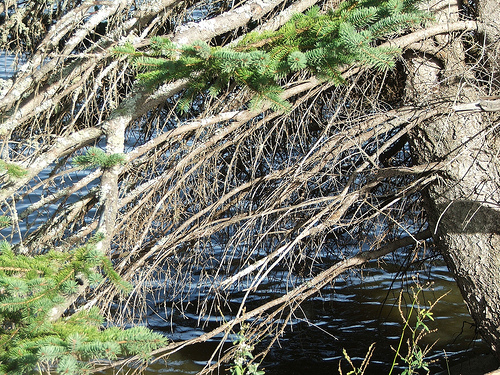Interacting with Others
 Humans rarely use blue
spruce for lumbar or wood products because it is not abundant in
nature and the wood is brittle and often full of knots.
It is more commonly used in ornamentals, general landscaping,
or for Christmas trees because of its symmetry and unique
greenish-blue foliage.
Many varieties of blue spruce have originated in cultivation.
These are called cultivars and are based on needle color and
crown form.
Humans rarely use blue
spruce for lumbar or wood products because it is not abundant in
nature and the wood is brittle and often full of knots.
It is more commonly used in ornamentals, general landscaping,
or for Christmas trees because of its symmetry and unique
greenish-blue foliage.
Many varieties of blue spruce have originated in cultivation.
These are called cultivars and are based on needle color and
crown form.
Human are barely the only species to utilize
blue spruce. Many
organis ms that live in the higher altitude use the foliage for
shelter. This
relationship is commensal because the species are benefiting from
using the blue spruce as shelter, but the blue spruce is not
affected.
ms that live in the higher altitude use the foliage for
shelter. This
relationship is commensal because the species are benefiting from
using the blue spruce as shelter, but the blue spruce is not
affected.
There are many species that are known to have a
parasitic relationship with blue spruce.
One of the many insects that have this relationship with the
blue spruce is the
western spruce budworm larvae (Choristoneura
occidentalis), which feeds on old needles in late April
then mine developing buds and defoliate tree growth.
If this happens repeatedly it will kill the tree.
Several diseases attack the seedlings, leaves, stems, and roots. An example of
this is
Phytophthora cinnamomi, which is a water-borne mold
that kills new seedlings.
Pratylenchus penetrans is a nematode that feeds on the
roots of the tree and cause reduced growth.
Leucocytospora kunzei is a widespread fungal disease
that cause cankers on one-fourth to one-half of the branches of the
infected host. Keep in
mind these are only examples of a few of the organisms that interact
with blue spruce, there are many more.
roots. An example of
this is
Phytophthora cinnamomi, which is a water-borne mold
that kills new seedlings.
Pratylenchus penetrans is a nematode that feeds on the
roots of the tree and cause reduced growth.
Leucocytospora kunzei is a widespread fungal disease
that cause cankers on one-fourth to one-half of the branches of the
infected host. Keep in
mind these are only examples of a few of the organisms that interact
with blue spruce, there are many more.
Now let's find out a little about the history.